
 5
5




Blog: 5 Acres & A Dream
Books: Kikobian Books | Permies Digital Market
This course is available online at https://www.udemy.com/course/permaculture-design-course/
 4
4








Invasive plants are Earth's way of insisting we notice her medicines. Stephen Herrod Buhner
Everyone learns what works by learning what doesn't work. Stephen Herrod Buhner
 6
6




Blog: 5 Acres & A Dream
Books: Kikobian Books | Permies Digital Market
 4
4




Blog: 5 Acres & A Dream
Books: Kikobian Books | Permies Digital Market
 1
1




Leigh Tate wrote:Ann, it sounds like you are puzzling over the same things I am.
Leigh said, "Here are some of my notes from the Bill Mollison and Geoff Lawton videos and book:
- Patterns are events of form.
- We're surrounded by the natural patterns of the universe, from micro to macro
- Design that follows natural patterns is productive, design that doesn't, isn't.
- there are very few pattern form types but infinite variations
Leigh said,
- Partial list of pattern forms:
- waves such as water waves and sand dune ripples
- spirals - snail shells, whirlpools, sunflower seeds in the flower head
- lobes - reefs, lichens
- branches - rives and tributaries, tree branches or roots
- nets - cracks in mud or skin, honeycombs
- scatters - algae, lichen on rocks
- cloud forms - clouds or tree crowns
- tessellations - turtle shells
- Fibonacci sequences - found in the number of sunflower seeds in a flower head or number of pine seeds in a pine cone.
Leigh said, "So, some simple examples of using pattern in design would be an herb spiral, making swales that follow land contours, making an herb garden with branching pathways, or circular greywater mulch pits. I guess, contrast with this with how most farming and gardening is done - squares, rectangles, and rows of straight lines, none of which is found in nature!
Where I'm stumped, is how to use patterns to design my property, or even transform my garden. I get the concept of patterns, but haven't found a good step-by-step tutorial so that I can look at my property and decide which pattern form to use where.
Invasive plants are Earth's way of insisting we notice her medicines. Stephen Herrod Buhner
Everyone learns what works by learning what doesn't work. Stephen Herrod Buhner
 3
3




Anne Miller wrote:I feel it is much easier when working with a blank slate. My gardens are already established and my only livestock is the wildlife.
Blog: 5 Acres & A Dream
Books: Kikobian Books | Permies Digital Market
 6
6




"The best time to plant a tree was 20 years ago, the second best time is now."
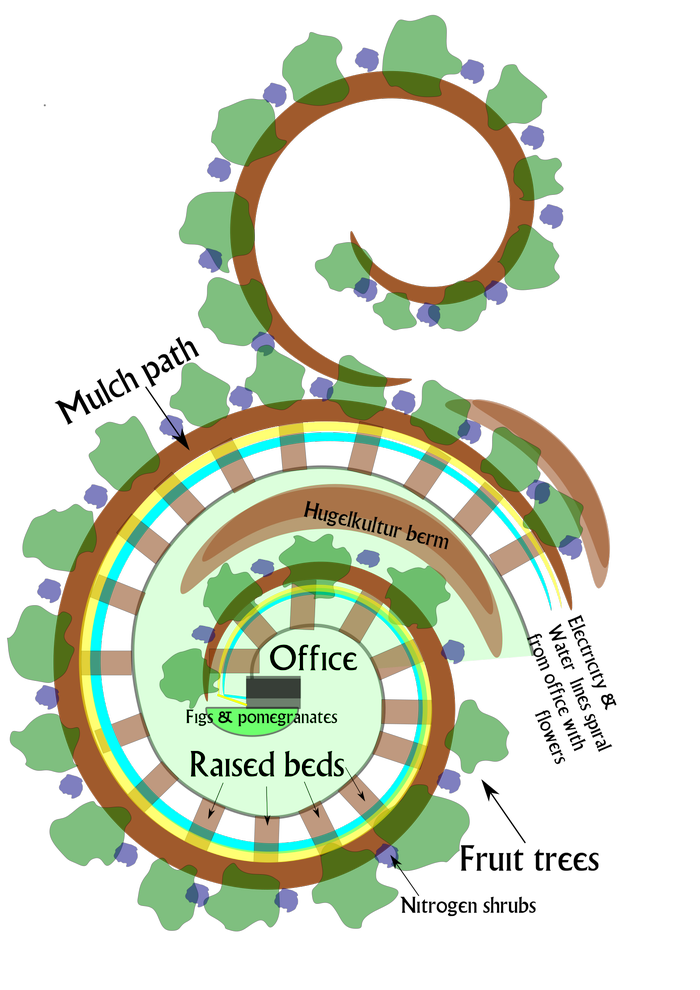
 1
1




Blog: 5 Acres & A Dream
Books: Kikobian Books | Permies Digital Market
 2
2




Leigh Tate wrote:George, what a pretty design! Very well thought out. Thank you for explaining the patterns and rationale behind it.
Mollison, PaDM, pg 70. wrote:“The pattern is design, and design is the subject of permaculture.”
 1
1




Do you have a projected starting date to make it a reality? Or are you still working on some fine tuning on the drawing board?
 2
2




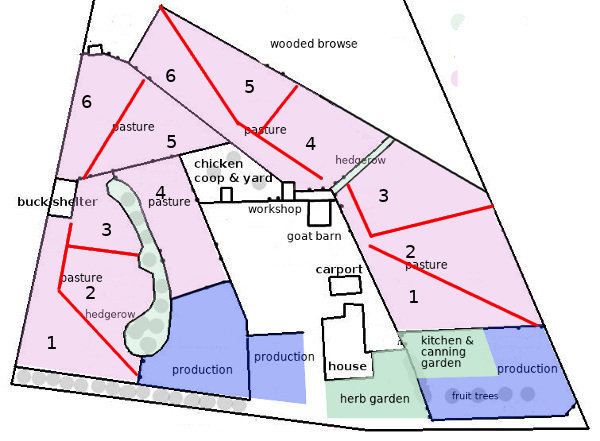
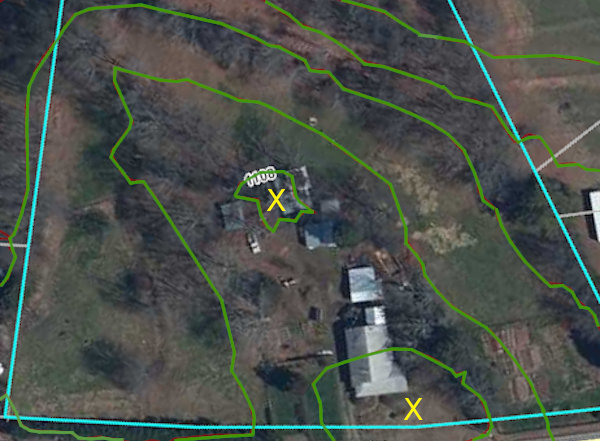
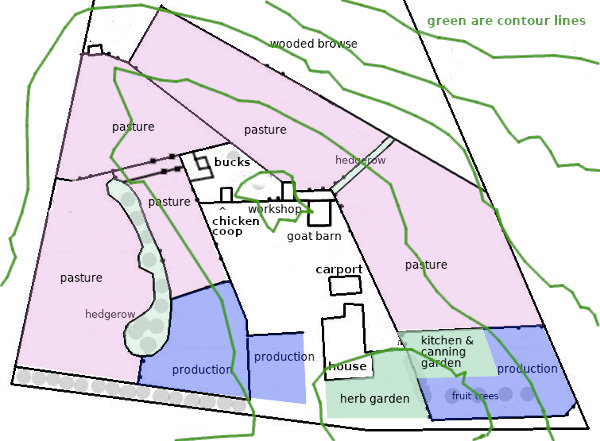
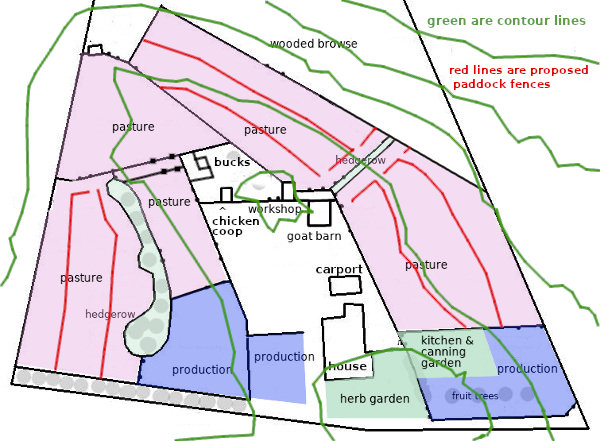
Blog: 5 Acres & A Dream
Books: Kikobian Books | Permies Digital Market
 4
4




Iterations are fine, we don't have to be perfect
My 2nd Location:Florida HardinessZone:10 AHS:10 GDD:8500 Rainfall:2in/mth winter, 8in/mth summer, Soil:Sand pH8 Flat
 2
2




randyeggert.com
 8
8




Best luck: satisfaction
Greatest curse, greed
 2
2




Invasive plants are Earth's way of insisting we notice her medicines. Stephen Herrod Buhner
Everyone learns what works by learning what doesn't work. Stephen Herrod Buhner
 6
6




 1
1








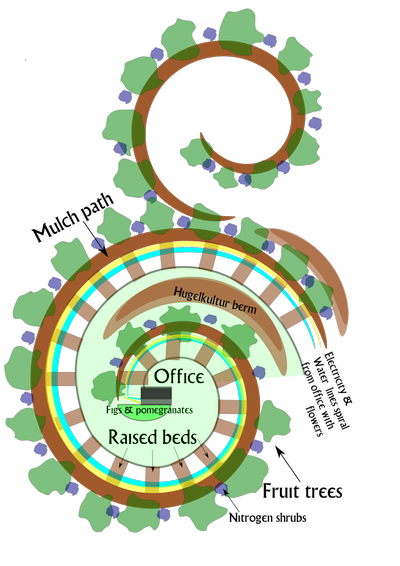
The largest pattern you see is obviously the spiral. So, why a spiral other than the beauty of it?
Well, each pattern in nature solves a problem, right? Patterns resolve tension. ...
 5
5




Bj Murrey wrote:
This "pattern" would drive me nuts. It's a hassle to get to the office at the center... nothing in nature works like this... it will take care to preserve this shape and layout...
I would only use this if I had a full time gardener and the office was some sort of local attraction people came to see...
I'd never use this at my home! Think about bringing a wheelbarrow to the center... PAIN IN THE....
Wasted walking, and once it's filled in with plants you can't see any spirals but from the air... and I can't fly.
Instead of these labor intensive designs, spirals, just use "comma" (like the punctuation) shapes... simpler, same principles, none of the obstacles or annoyance...
UNLESS of course you designing it all for the airplane passengers who might fly over and look someday
![Filename: organic-orchard-spirals.png
Description: [Thumbnail for organic-orchard-spirals.png]](/t/164449/a/274919/organic-orchard-spirals.png)
 1
1




George Yacus wrote:
Bj Murrey wrote:
This "pattern" would drive me nuts. It's a hassle to get to the office at the center... nothing in nature works like this... it will take care to preserve this shape and layout...
We are probably more alike than we realize! I love the explanation! I could tell there was a lot of thought in it, and it was beautiful. Reminds me of chaco culture city layouts from above.
One of the structures I'm building now on my place is a stone chapel facing west, with an outdoor roman style bath house (open above, surrounded by garden and stone) behind it under some very large oaks. Its aligned to the sun/ moon rise and set points, during the fall, when i use it for my hot tub. There is zero utility to any of that. Its pure joy and aesthetic with permaculture added in and around.
All the best to you friend.

|
There are 10 kinds of people in this world. Those that understand binary get this tiny ad:
The new purple deck of permaculture playing cards
https://www.kickstarter.com/projects/paulwheaton/garden-cards
|







